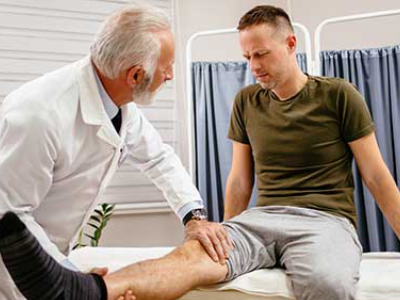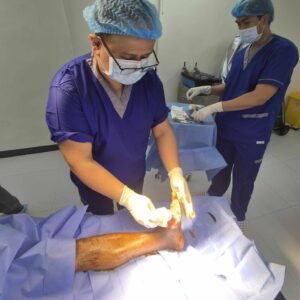Arthritis affects millions of people worldwide, causing persistent pain, stiffness, and fatigue that can significantly impact daily life. Whether it’s Osteoarthritis (OA), the most common form of arthritis, or Rheumatoid Arthritis (RA), a chronic autoimmune condition, arthritis can make even the simplest tasks feel challenging. In this guide, we’ll explore effective arthritis treatments, pain management strategies, and lifestyle changes that can help improve quality of life and manage symptoms.
Understanding Arthritis: Causes and Symptoms
Arthritis encompasses a variety of joint diseases, but the most common types are Osteoarthritis (OA) and Rheumatoid Arthritis (RA). Both conditions involve inflammation, joint pain, and limited movement, but they differ in their causes and effects on the body.
Osteoarthritis (OA): OA is a degenerative joint disease that often develops due to wear and tear of the cartilage in joints, most commonly in the knees, hips, and spine. It is typically linked to aging, but joint injuries can also accelerate its development. Symptoms include pain, stiffness, swelling, and decreased mobility, particularly after physical activity or prolonged sitting.
Rheumatoid Arthritis (RA): RA is an autoimmune disease where the body’s immune system attacks healthy joint tissues, leading to inflammation and joint damage. It usually affects the joints in the hands, wrists, and feet. Symptoms of RA include joint pain, morning stiffness, swelling, and fatigue, often accompanied by fever or loss of appetite.
Conventional Arthritis Treatment Options
While there is no cure for arthritis, many treatments can alleviate symptoms and improve joint function.
1. Medications for Arthritis Relief
- Nonsteroidal anti-inflammatory drugs (NSAIDs): These over-the-counter medications help reduce inflammation and relieve pain. Common NSAIDs include ibuprofen and naproxen.
- Corticosteroids: Prescription medications, such as prednisone, can provide rapid relief from inflammation but are typically used for short-term treatment due to potential side effects.
- Disease-modifying antirheumatic drugs (DMARDs): For RA, DMARDs like methotrexate and biologics target the immune system to reduce inflammation and prevent joint damage.
2. Physical Therapy
Physical therapy can help strengthen muscles around the joints, reduce pain, and improve flexibility. A therapist will teach exercises that help maintain joint function while minimizing further stress on the affected areas.
3. Surgical Interventions
In severe cases, surgery may be required to improve joint function or alleviate pain. Common procedures include joint replacement (knee, hip) and arthroscopy (minimally invasive surgery for joint cleaning).
Natural and Alternative Treatments for Arthritis
Many individuals seek natural remedies to complement their conventional arthritis treatments. While these options may not replace medication, they can help manage symptoms and improve overall well-being.
1. Dietary Changes and Anti-inflammatory Foods
Eating an anti-inflammatory diet rich in omega-3 fatty acids, antioxidants, and whole foods can support joint health. Foods like salmon, walnuts, berries, and leafy greens can reduce inflammation and help manage arthritis symptoms.
2. Exercise and Movement Therapy
Low-impact exercises, such as yoga, swimming, or cycling, can improve flexibility and strength without stressing the joints. Aquatic therapy is particularly effective for individuals with knee or hip arthritis, as the buoyancy of water reduces joint pressure.
3. Herbal Remedies and Supplements
- Glucosamine and Chondroitin: These supplements may help rebuild cartilage and reduce arthritis symptoms.
- Turmeric: Contains curcumin, a compound with anti-inflammatory properties that can help manage arthritis pain.
- CBD Oil: Some studies suggest that cannabidiol (CBD) oil can alleviate joint pain and inflammation, though more research is needed.
Lifestyle Modifications for Arthritis Management
Making a few lifestyle changes can have a significant impact on managing arthritis symptoms.
Weight Management: Excess weight can increase stress on weight-bearing joints, particularly the knees and hips. Maintaining a healthy weight can reduce pain and improve mobility.
Using Assistive Devices: Assistive devices such as knee braces, orthotic shoes, and ergonomic furniture can help reduce strain on joints and make daily activities more manageable.
Pain Management Techniques: Incorporating heat/cold therapy, acupuncture, and mindfulness techniques like meditation can help manage pain and reduce stress. Regular relaxation practices have been shown to help with chronic pain management.
Preventing Arthritis Progression and Flare-Ups
While arthritis is a chronic condition, there are steps individuals can take to slow its progression and minimize flare-ups.
Early Intervention and Regular Check-ups: See your doctor regularly for arthritis management. Early diagnosis and treatment can prevent irreversible joint damage and reduce the frequency of flare-ups.
Avoiding Joint Overuse: Alternate activities and avoid long periods of inactivity. Engaging in low-impact activities, such as walking or swimming, is ideal for those with arthritis.
Importance of Sleep and Stress Reduction: Adequate sleep and managing stress through relaxation techniques or therapy can reduce inflammation and improve overall health, making it easier to cope with arthritis symptoms.
Takeaway
Arthritis may be a lifelong condition, but there are numerous ways to manage symptoms and maintain an active lifestyle. From medications and physical therapy to natural remedies and lifestyle changes, effective arthritis treatment are available to help you live more comfortably. If you’re experiencing joint pain or other symptoms of arthritis, don’t wait to seek help. Consult with your healthcare provider to create a personalized treatment plan that works best for you.






